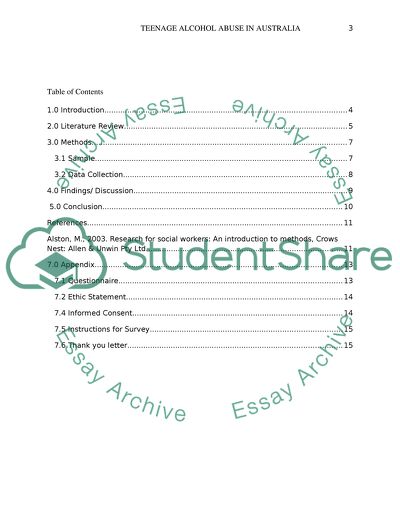Cite this document
(“Survey on Teenage Alcohol Abuse in Ausrtalia Research Paper”, n.d.)
Survey on Teenage Alcohol Abuse in Ausrtalia Research Paper. Retrieved from https://studentshare.org/sociology/1455193-quantitative-survey-on-alcohol-use-in-teenagers-in
Survey on Teenage Alcohol Abuse in Ausrtalia Research Paper. Retrieved from https://studentshare.org/sociology/1455193-quantitative-survey-on-alcohol-use-in-teenagers-in
(Survey on Teenage Alcohol Abuse in Ausrtalia Research Paper)
Survey on Teenage Alcohol Abuse in Ausrtalia Research Paper. https://studentshare.org/sociology/1455193-quantitative-survey-on-alcohol-use-in-teenagers-in.
Survey on Teenage Alcohol Abuse in Ausrtalia Research Paper. https://studentshare.org/sociology/1455193-quantitative-survey-on-alcohol-use-in-teenagers-in.
“Survey on Teenage Alcohol Abuse in Ausrtalia Research Paper”, n.d. https://studentshare.org/sociology/1455193-quantitative-survey-on-alcohol-use-in-teenagers-in.


